I want to find the derivatives of some scattered data. I have tried two different methods:
projecting the scattered data on a regular grid using scipy.interpolate.griddata, then computing the gradients with numpy.gradients, and then projecting values back to the scattered locations.
creating a CloughTocher2DInterpolater (but I have the same issue with others) and getting the gradients out of it
The second one is an order of magnitude faster than the first one but unfortunately, it also goes crazy quite quickly when data are a bit complex. For instance starting with this signal (called F and which is a simple addition of tanh stepwise functions along x and y):
When I process F using the two methods, I get:
Method 1 gives a good approximation. Method 2 is also good but I need force the colormap because of the existence of some extreme values.
Now, if I add a small noise (i.e. of amplitude 0.1 while the signal has amplitudes between -3 and 3), the interpolator just goes crazy giving very large extreme values:
I don't know how to deal with this. I understand the interpolator won't like irregular function or noise, but I was not expecting such discrepancy. My first idea was to smooth data first but strangely I can't find any method that would help me on this. Another idea would be to make a 2d fit of F to try to remove noise but I'm dry here too...any idea ?
Here is the corresponding python example (working on python3.6.9):
import numpy as np
from scipy import interpolate
import matplotlib.pyplot as plt
plt.interactive(True)
# scattered data
N = 200
coordu = np.random.rand(N**2,2)
Xu=coordu[:,0]
Yu=coordu[:,1]
noise = 0.
noise = np.random.rand(Xu.shape[0])*0.1
Zu=np.tanh((Xu-0.25)/0.01+(Yu-0.25)/0.001)+np.tanh((Xu-0.5)/0.01+(Yu-0.5)/0.001)+np.tanh((Xu-0.75)/0.001+(Yu-0.75)/0.001)+noise
plt.figure();plt.scatter(Xu,Yu,1,Zu)
plt.title('Data signal F')
#plt.savefig('signalF_noisy.png')
### get the gradient
# using griddata np.gradients
Xs,Ys=np.meshgrid(np.linspace(0,1,N),np.linspace(0,1,N))
coords = np.array([Xs,Ys]).T
Zs = interpolate.griddata(coordu,Zu,coords)
nearest = interpolate.griddata(coordu,Zu,coords,method='nearest')
znan = np.isnan(Zs)
Zs[znan] = nearest[znan]
dZs = np.gradient(Zs,np.min(np.diff(Xs[0,:])))
dZus = interpolate.griddata(coords.reshape(N*N,2),dZs[0].reshape(N*N),coordu)
hist_dzus = np.histogram(dZus,100)
plt.figure();plt.scatter(Xu,Yu,1,dZus)
plt.colorbar()
plt.clim([0 ,10])
plt.title('dF/dx using griddata and np.gradients')
#plt.savefig('dxF_griddata_noisy.png')
# using interpolation method Clough
interp = interpolate.CloughTocher2DInterpolator(coordu,Zu)
dZuCT = interp.grad
hist_dzct = np.histogram(dZuCT[:,0,0],100)
plt.figure();plt.scatter(Xu,Yu,1,dZuCT[:,0,0])
plt.colorbar()
plt.clim([0 ,10])
plt.title('dF/dx using CloughTocher2DInterpolator')
#plt.savefig('dxF_CT2D_noisy.png')
# histograms
plt.figure()
plt.semilogy(hist_dzus[1][:-1],hist_dzus[0],'.-')
plt.semilogy(hist_dzct[1][:-1],hist_dzct[0],'.-')
plt.title('histogram of dF/dx')
plt.legend(('griddata','ClouhTocher'))
#plt.savefig('dxF_hist_noisy.png')


